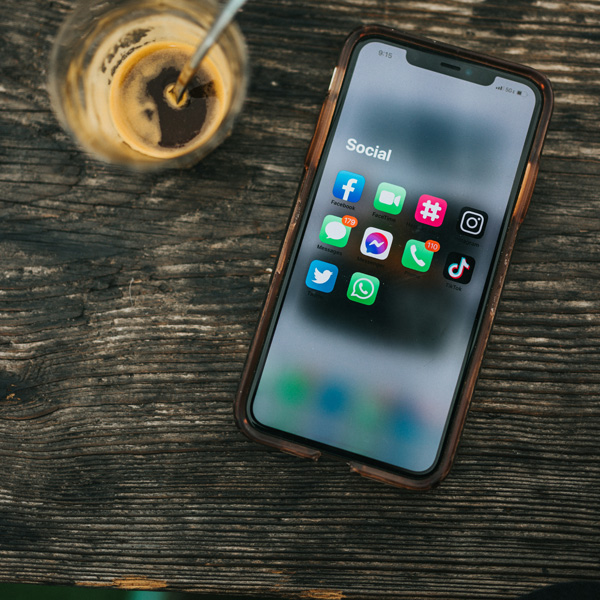Sports teams leverage SNS to engage the next generation

[An interview with Ricardo Marcel and I, discussing social media engagement with younger fans. Photo by Unsplash]
Sports teams are increasingly turning to social media to connect with younger fans.
Boston Bruins’ digital content specialist, Elaine Cavalieri, has started to embrace the use of TikTok to create funny behind-the-scenes videos.
Gen Z, who prefer to watch sports content on platforms like TikTok, are the main target.
One video featuring David Pastrňák’s stolen doughnut garnered 2.2 million views, and the Bruins also posted Brad Marchand striking a funny pose, which attracted 3.5 million views.
Social media is becoming a key marketing tool for sports, especially to younger audiences.
As a result, sports teams are hiring young, social media-savvy staff to create content that resonates with Gen Z.
Authentic, funny, and raw moments are what Gen Z loves to see, and social media engagement has proven to be the key to doing so.
Often, teams will carefully choose when and where to post content for maximum engagement.
For instance, the Boston Red Sox have also led the way in using social media to attract younger fans.
The Red Sox were the first MLB team on TikTok and now have millions of followers.
They engage fans with videos like “Fit Fridays,” where players show off their outfits before games.
For teams today, social media is about giving fans access to moments they can’t get from just watching the game, therefore, funny, relatable content makes fans feel closer to the players and part of the action.
Another example of this is the innovative promotion of Mike Tyson vs. Jake Paul boxing match on Netflix, where innovative social network marketing met live entertainment.
When Netflix announced the upcoming Mike Tyson vs. Jake Paul boxing match, it wasn’t just the legendary name of Mike Tyson or the controversial figure of Jake Paul that had people talking.
It was the way the event was being promoted, using social media to capture the attention of younger viewers like never before.
With both Tyson and Paul having massive social media followings, the boxing match became more than just a sporting event.
Both fighters successfully utilized platforms like Instagram, Twitter, and TikTok to hype up the match, posting workout videos, trash talk, and teasers that built excitement.
Even Netflix itself contributed by releasing exclusive behind-the-scenes footage and sneak peeks, encouraging viewers to follow along as the match approached.
To learn more about how the promotion impacted young viewers, I spoke with a senior student and boxing fan, Ricardo who subscribed to a Netflix subscription after seeing the buzz online.
"I kept seeing posts and clips about the fight on Instagram and TikTok, so I thought, ‘Okay, this is going to be huge.’” Ricardo said.
He continued, “Jake Paul and Mike Tyson are like two completely different worlds, but they both have so many followers and fans. The way they promoted it made it feel like a must-watch event. It was everywhere.”
The hype wasn’t just about the fight itself, but also the build-up, the smack talk, and the way social media made it feel like fans were getting a front-row seat to all the drama.
Ricardo explained, “I don't usually watch a lot of live sports, but this was different. With all the posts, memes, and behind-the-scenes stuff, it felt more personal, I didn't want to miss out.”
TikTok played a significant role in reaching younger audiences.
With short, viral videos, clips of the fighters training or joking around quickly went viral, adding fuel to the fire of anticipation.
Netflix capitalized on this momentum by releasing exclusive content and countdowns to the match, keeping the hype alive in the days leading up to the event.
For young viewers such as Ricardo, this kind of social media-driven promotion was a game-changer.
“Before, sports felt a little distant,” Ricardo said.
“But with all the social media promotion, it was like the fight was happening in real-time. It made me feel like I was a part of it, even though I wasn’t in the ring.” Ricardo followed up.
Sports teams, event promotion, and streaming services have demonstrated the power of social media in reaching a younger audience in today’s age.
These days, it seems that content surrounding the main event is just as imperative as the main event itself when engaging an audience in the modern world of sports.

- Minsoo Park / Grade 11
- Duluth Marshall High School

![THE HERALD STUDENT REPORTERS [US]](/assets/images/logo_student_us.png)
![THE HERALD STUDENT REPORTERS [Canada]](/assets/images/logo_student_ca.png)
